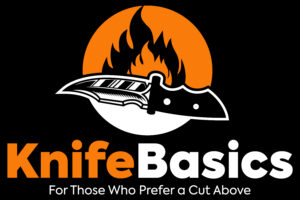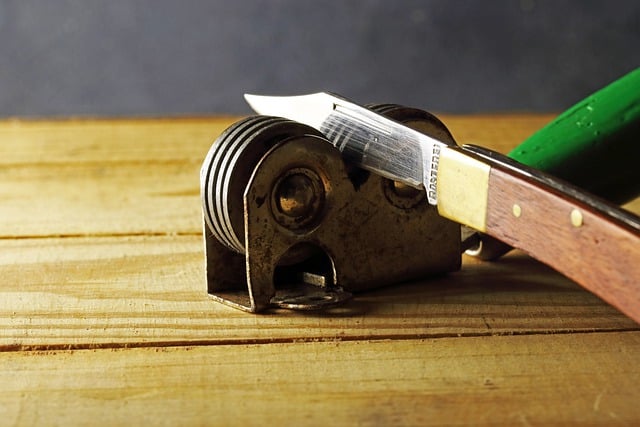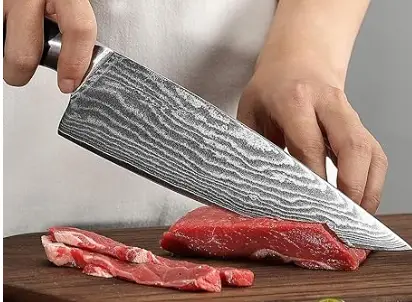Differentiating a Wharncliffe blade from a Sheepsfoot blade and vice versa is usually confusing to many people, which is understandable if you consider that they share a raft of similarities.
The main difference between a Wharncliffe blade and a Sheepsfoot blade is that a Wharncliffe blade incorporates the use of a slanting spine while a Sheepsfoot blade employs a spine that is parallel to the cutting edge.
For that reason, a Wharncliffe comes with a slimmer tip, useful for an elaborate cutting task while a Sheepsfoot comes with a tip that is dull, great for heavy cutting work.
Is a Wharncliffe Knife and a Sheepsfoot Knife The Same?
Wharncliffe and Sheepsfoot: The differences
There are a couple of variations you can notice between a Wharncliffe knife and a Sheepsfoot blade.
Identifying and understanding the differences between the two is essential in assisting a buyer or a user to determine which is the best for undertaking a particular task.
The fundamental difference between the two blades are:
1. The shape of the Blade
The Wharncliffe blade is famous for its slanting or curved spine. The distinctive construction of the Wharncliffe knife involves not only a slanting spine but also a straight edge.
The dropping or the curving of the spine is extended steadily from the handle of the knife to its tip. Hence, the resulting tip is not only narrower but also has reasonable sharpness.
The shape of the spine comes in handy in providing additional necessary steel on the tip, which makes it noticeably more durable.
Presently, it is common to find a Wharncliffe knife as a folding pocket blade.
On the other hand, a Sheepsfoot blade utilizes the use of a parallel edge and spine, unlike the slanting Wharncliffe’s spine.
The linear edge and spine of this particular tool are found in most parts of the blade, except the part where the curving of the spine is descending, meeting the knife edge.
2. Tip of the Blade
Wharncliffe blades are popular owing to their sharp and constricted tip. Because of the construction style of the blade tips, a Wharncliffe is useful as an all-purpose tool including for self-defense.
Although a Wharncliffe blade is not wider, still, it gives a feeling that it is solid and durable, capable of withstanding the application of reasonable force of pressure on its tip.
For this, you can find it in a multipurpose tool setup and can be used in everyday tasks, from unboxing, opening cans, or cutting wires. Check out Leatherman Surge it has a Wharncliffe style knife.
On the contrary, a Sheepsfoot blade proudly dons its blunt tip. The not-so-sharp tip of the knife renders it not great for piercing tasks, although it is much safer compared to a Wharncliffe knife.
You can employ a Sheepsfoot for stuff cutting, devoid of being concerned about the possibility of accidentally slicing or stabbing yourself.
3. Design Aesthetics
The curved construction of the Wharncliffe is straightforward and not artistic. The spine design is observed in most other blades like drop point blades.
Thus, compared to the Sheepsfoot spine, Wharncliffe does not appeal visually.
Sheepsfoot knives come with a curvature, its appearance is pleasing to look at and looks more like a work of art.
For a spine that is less conspicuous, you can try using the Gerber Sharkbelly. Other Sheepsfoot spines incorporate the use of different modifications such as the CRKT Pilar II.
Usually, Sheepsfoot blades have a construction approach that is finer compared to the offering of a Wharncliffe.
4. Construction of the Tip
Since a Wharncliffe blade is built with a narrow tip, there is less use of steel which makes it more susceptible to quicker damage compared to a blade of Sheepsfoot.
Also, the sharpening of the blade leads to the abrasion of its material, leading to a blade with reduced longevity.
Sheepsfoot knives are synonymous with wider tips as they use more steel in their construction. Sharpening the tool’s point frequently will not diminish its durability.
Similarities between Wharncliffe and Sheepsfoot
1. Identical Edge of Laceration
Both these two knives are designed with much the same straight-cutting edge design.
2. A Prolonged Handle
In general, both these two blades, unlike blades with marginally shorter grips, come with sizeable grips. Thus, Wharncliffe and Sheepsfoot are highly preferred when you desire to make incisions that are exceptionally precise.
3. Altered Versions
Apart from the conventional Wharncliffe and Sheepsfoot, there are also altered versions of the blades.
The altered versions are mainly identified by their enhanced slicing ability (more razor-sharp) and considerable bellies.
The custom-made versions of Wharncliffe and Sheepsfoot are mainly great for carrying out the task of carving.
4. Price
The price of these blades is almost identical depending on the manufacturer and quality. The price varies across the range with the construction material quality.
Factors like the type of steel used and handle material will rank the blades in various price categories. A blade with premium steel like CPM-20CV will be more expensive than that made of cheap steel like AUS 10A steel.
Wharncliffe Blade Pros and Cons
Wharncliffe Blade Pros
- Since the blade is broad, it offers commendable strength and stability
- With the knifepoint not being sharp, you are safeguarded from accidentally cutting yourself.
- The dull spine of the blade enables the application of pressure to achieve enhanced control and force.
- The edge of the tool is undeviating, allowing for effective slicing.
Wharncliffe Blade Cons
- Because the tool’s spine is bent, applying force is substantially more difficult than when dealing with a blade having a straight spine.
- The knifepoint is not capable of a stab or a piercing.
- It is not that strong despite having a penetrating tip
- It is difficult to manufacture this blade type.
Sheepsfoot Blade Pros and cons
Sheepsfoot Blade Pros
- The unbending edge of this knife makes it an effective tool for performing a chop or a simple slicing.
- With a dull spine, the application of force can be done safely.
- The downward curve fails to end at a point that is sharp, which enhances your safety.
- Working with a Sheepsfoot blade is much safer as it is difficult to accidentally stab or pierce yourself.
- Suitable for emergency or rescue situations, especially for an EMT, since there is a reduced risk of accidental stabbing.
Sheepsfoot Blade Cons
- Stabbing or piercing using the knife is difficult as it lacks a sharp point.
- Performing a cutting and slicing that is complex is a challenge as the edge is not bent.
Conclusion
In conclusion, both the Wharncliffe blade and the Sheepsfoot blade are built with a lot of beneficial features. These types of knives are generally useful for a majority of daily uses such as slicing, cutting, and carving.
Your choice of the blade should depend on the type of work you do. I recommend getting both blade types and using the Wharncliffe for precision cuts while using the Sheepsfoot for heavy-duty tasks.


